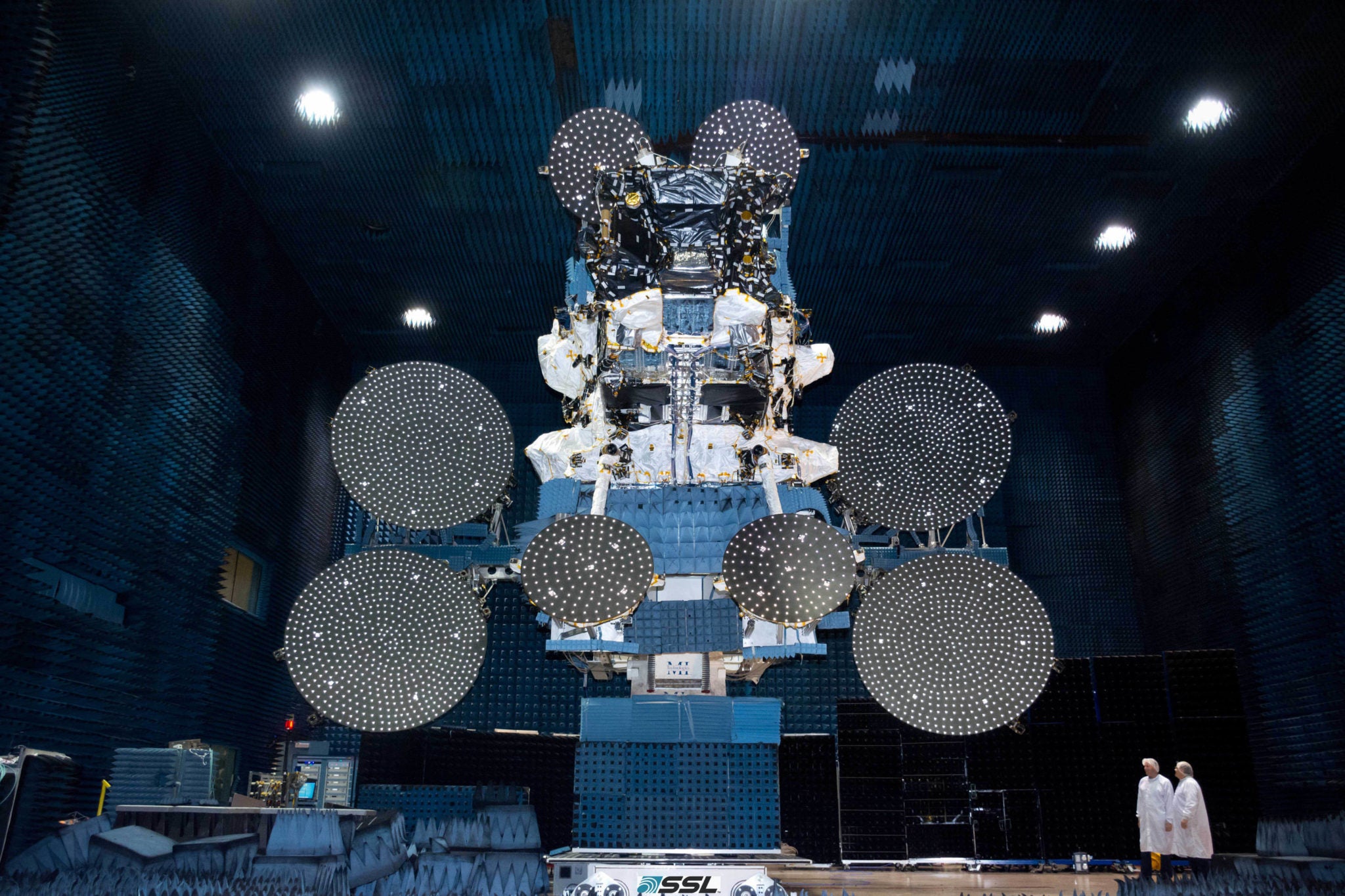Latest News
[Via Satellite 09-01-2016] Australia’s National Broadband Network Company (NBN Co.), the state run telecommunications company tasked with closing the country’s digital divide, says it is on track to complete its network by 2020. The company released its Corporate Plan 2017 on Aug. 30, outlining how NBN is aiming to complete the network rollout of high-speed broadband internet to all Australian premises within that timeframe, which will include the launch of the second of two satellites, Sky Muster 2, in early October 2016.
Sky Muster 1 launched aboard an Ariane 5 rocket last year, and its twin, Sky Muster 2, arrived at the European Spaceport in Kourou, French Guiana, on Aug. 31 after completion by manufacturer Space Systems Loral (SSL) for an October launch. The identical Ka-band High Throughput Satellites (HTS) aim to provide advanced satellite services to rural parts of the country that currently have either limited or no connectivity. NBN started providing service with the first satellite this year, and once commercial service is switched on for both, the company aims to deliver high-speed broadband internet service via satellite to an estimated 400,000 Australians.
“The NBN mission, is to serve Australians with fast, quality broadband,” NBN Co.’s Program Director for Satellites Matt Dawson told Via Satellite in an interview earlier this year.
The NBN system will use a combination of terrestrial and satellite delivery methods, to reach the entire country, for which satellite is only responsible for reaching 3 percent of the total populace. To be able to service 100 percent of the Australian population, NBN anticipates reaching 20 percent by optical Fiber-to-the-Home (FTTH), 38 percent by existing Fiber-to-the-Node (FTTN), 34 percent by Hybrid Fiber/Coaxial (HFC) cable already deployed by pay-TV companies, and 5 percent by Fixed Wireless (FW).
While only a single-digit percentage of all premises in Australia will have a Sky Muster connection, that nonetheless represents more than 11,000 homes and businesses in the Northern Territory of Australia alone, according to a recent release by NBN.
“The value of the satellite broadband service delivered through the program brings is that for 3 percent of the Australian population, those living in some of the most remote areas of the country and those that currently simply don’t have access to the same quality of life applications, will now have access to those life-changing benefits only satellite can deliver,” Dawson said. “Satellite will go a long way to help with the very real digital divide.”
According to the 2017 Corporate Plan, the combined capacity of both satellites will be 135 Gbps — equivalent to more than 30 times the capacity of the interim satellite service. Beyond reaching rural citizens, the satellites could service other applications.
“In terms of other products that the NBN satellite could bring to market, we are already working on in-flight connectivity and education/distance learning markets. After the initial launch of the product aimed at the residential market, we will be looking at more business-orientated products as well as markets like emergency services,” Dawson added.
Moving forward with hooking up homes and businesses, NBN says it is progressing to complete the network build by 2020 with peak funding of $49 billion and finish the rollout — connecting an estimated 8 million premises — by the end of the decade. The network promises to deliver access to at least 25 megabits per second (Mbps) downstream to all premises and at least 50 Mbps downstream to 90 percent of fixed line premises.
The company is on track to activate more than 600,000 homes this year through all technologies on their network, more than At its peak installation rate, in 2019, NBN has forecasted it will activate high-speed internet at more than 2.5 million new premises.
We are on track to make fast broadband available to everyone in 2020,” CEO Bill Morrow said in a statement outlining the rollout plan. “We have managed to de-risk many of our previous assumptions with greater experience, increased planning and data accuracy and contracts in place with our partners … the road ahead is steep. We are realistic about the challenges and we are well aware of the risks. We have never been better prepared to manage the successful delivery of the NBN network.”
Get the latest Via Satellite news!
Subscribe Now